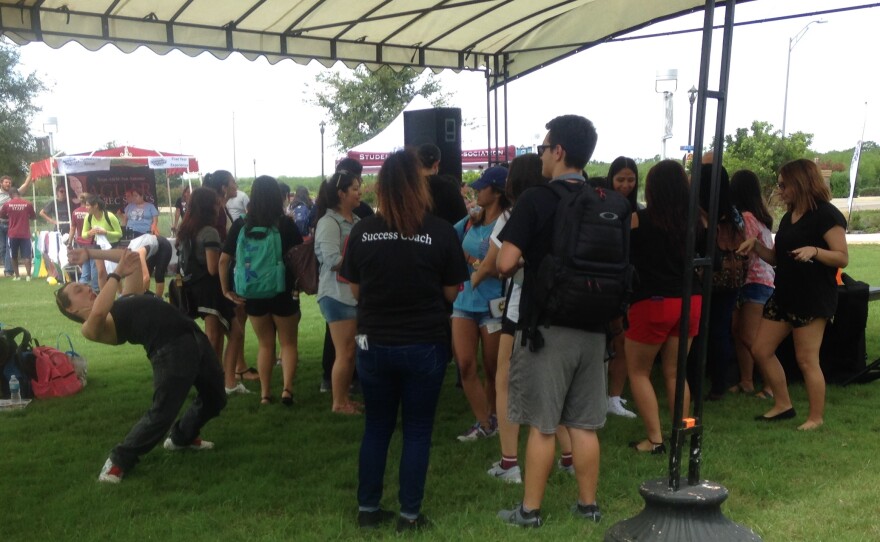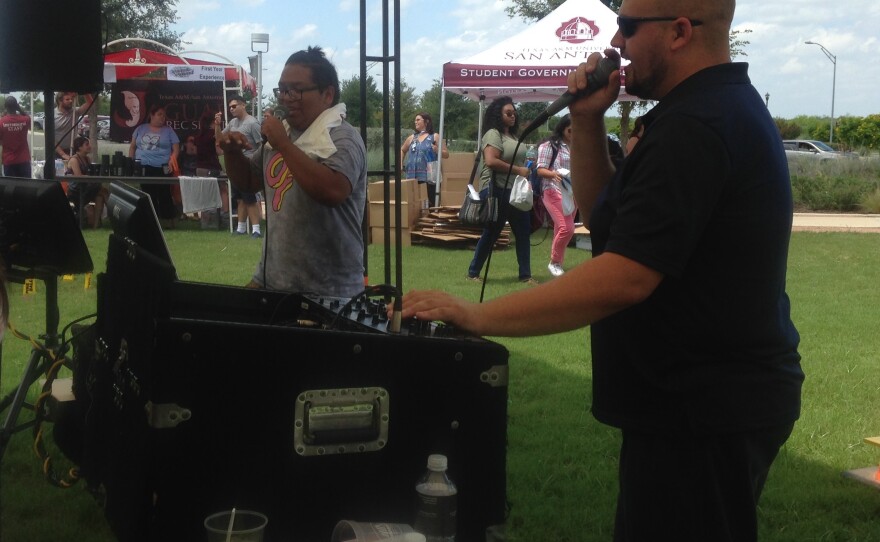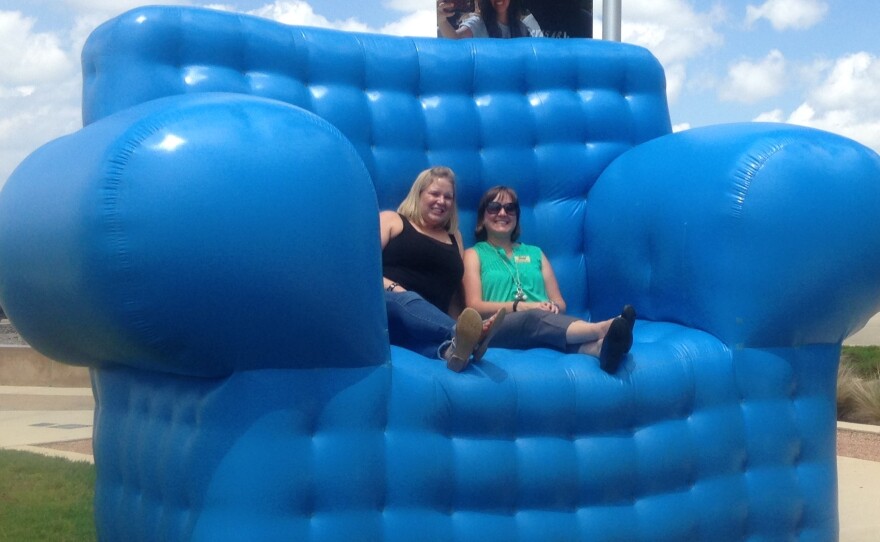Texas A&M-San Antonio welcomes 508 students as its first freshman class of what is now a comprehensive four-year university. Some say a public university has long been needed on the city’s South Side.
It used to be on the South Side, if you wanted opportunities, you had to go north. That's where the jobs and universities were. But transportation was expensive, and if you didn't have means, you were stuck.
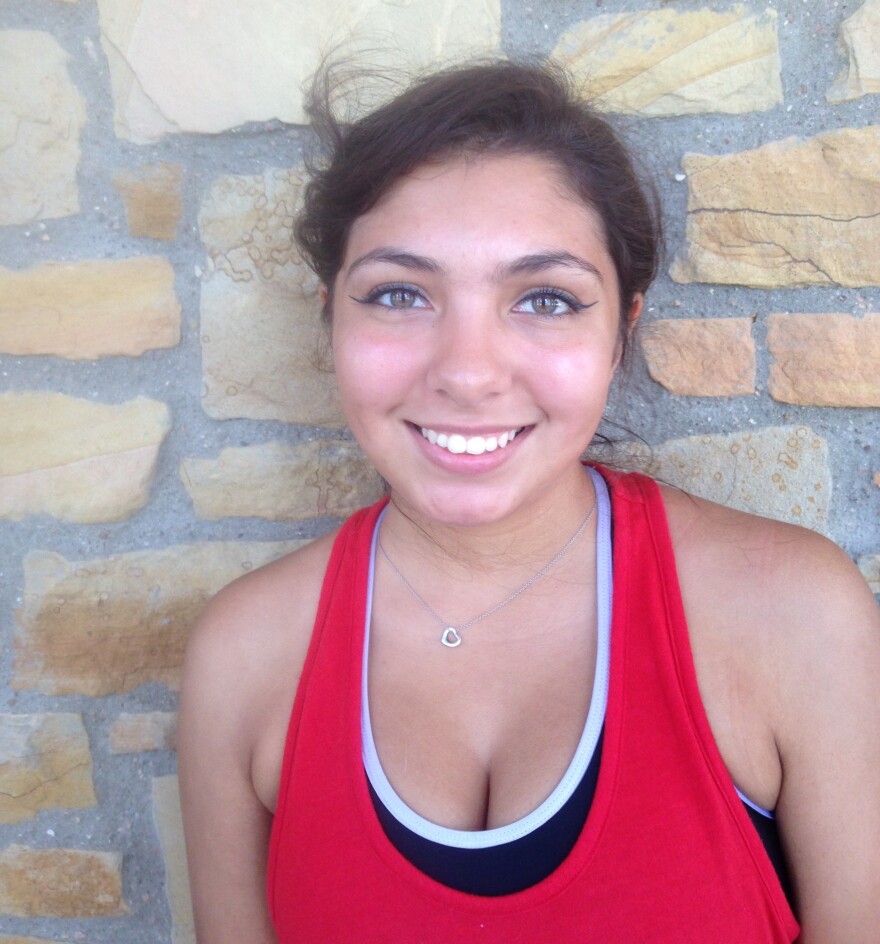
Naya Jaimes is a freshman biology major at A&M. She wants to eventually work with animals. She went to South San High School and seems giddy at the fact that her university is right here.
She had wanted to go to a large university, but chose A&M for the cost. After three days on campus, the school's grown on her.
"I like the size of the classes. It’s more comfortable. Instead of having 300 students at a big university. And then there’s people I know here. And people who can help me with my homework from classes," she says.
Naya says it was important for her to go to a four-year school.
Melissa Mahan is vice president for student affairs.
"There are several students who want to be able to start at one university and be able to go all the way for all four years, and they haven’t had that opportunity on the South Side. And so this is really filling that need," Mahan says.
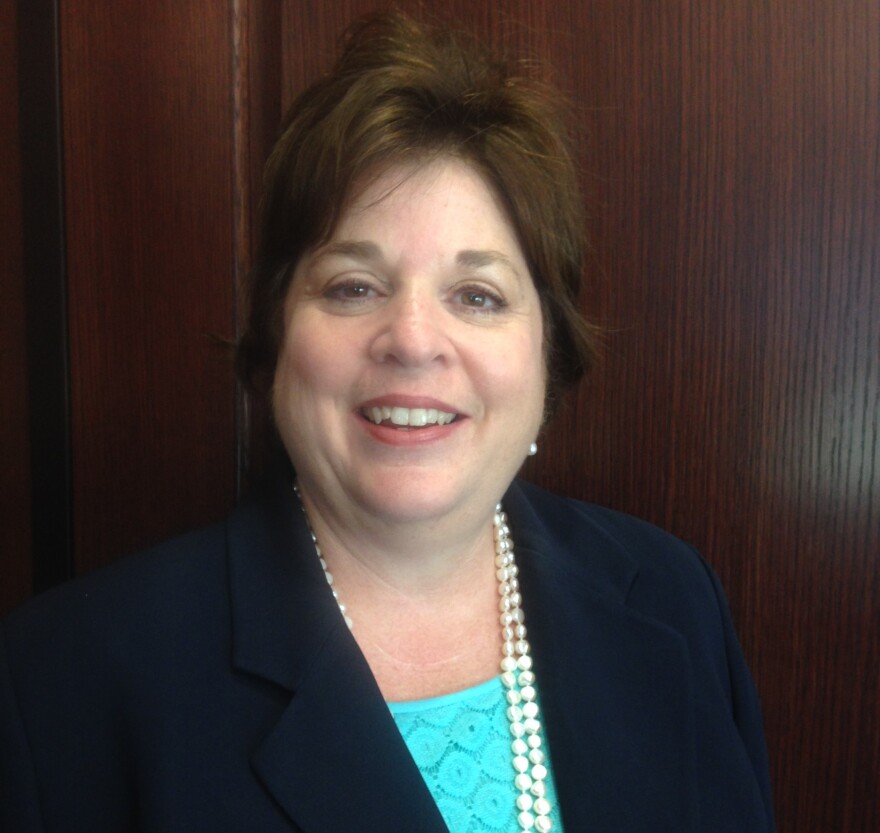
Mahan says that 73 percent of A&M students are the first in their families to go to college. To make sure those students don’t fall through the cracks, Mahan says each of them is assigned a success coach who follows them on their academic journey.
"They’re really their advocates, and they follow them to make sure they’re not hitting any roadblocks, if they’re having any financial aid issues or if they need to see their advisor, or anything like that," she says. "They really help bridge the gap. If someone doesn’t go to class, we’re following up. We’re making sure they have the support and services they need."
Mahan says she thinks students feel comfortable at A&M because they have personal relationships with the faculty.
"We know the names of our students here. Most of our classes don’t have over 30 students in the classes. So that way you really get to experience community. I really feel like we have a family community atmosphere here and the students really resonate with that," she says.

"I’m really glad I chose here because the classes are so small. It feels really interactive. It feels really close."
That’s Richard Acosta. He was the first freshman admitted to the university. He says going to a four year university was a priority.
"Me, personally, it was something I really wanted to do because, well, my sister did two plus two, which isn’t bad. For me it was just a personal goal to do a four year university straight up to see if I could handle it. And so far I feel like I’ve been doing ok," Acosta says.

Mahan says the overwhelming majority of A&M students are from Bexar County. But then there’s Jacob Mosley.
"I actually found out that once we would be the first freshmen, I really wanted to go here more than UTSA, because I just wanted to be the first freshmen" Mosley says. "But I did want to move to San Antonio—I’m from Houston, so I wanted to see what it was like living out here."
At 18 years old, Mosley’s living in a studio apartment so he can attend Texas A&M. He says everything’s coming together and adds, it feels real.


